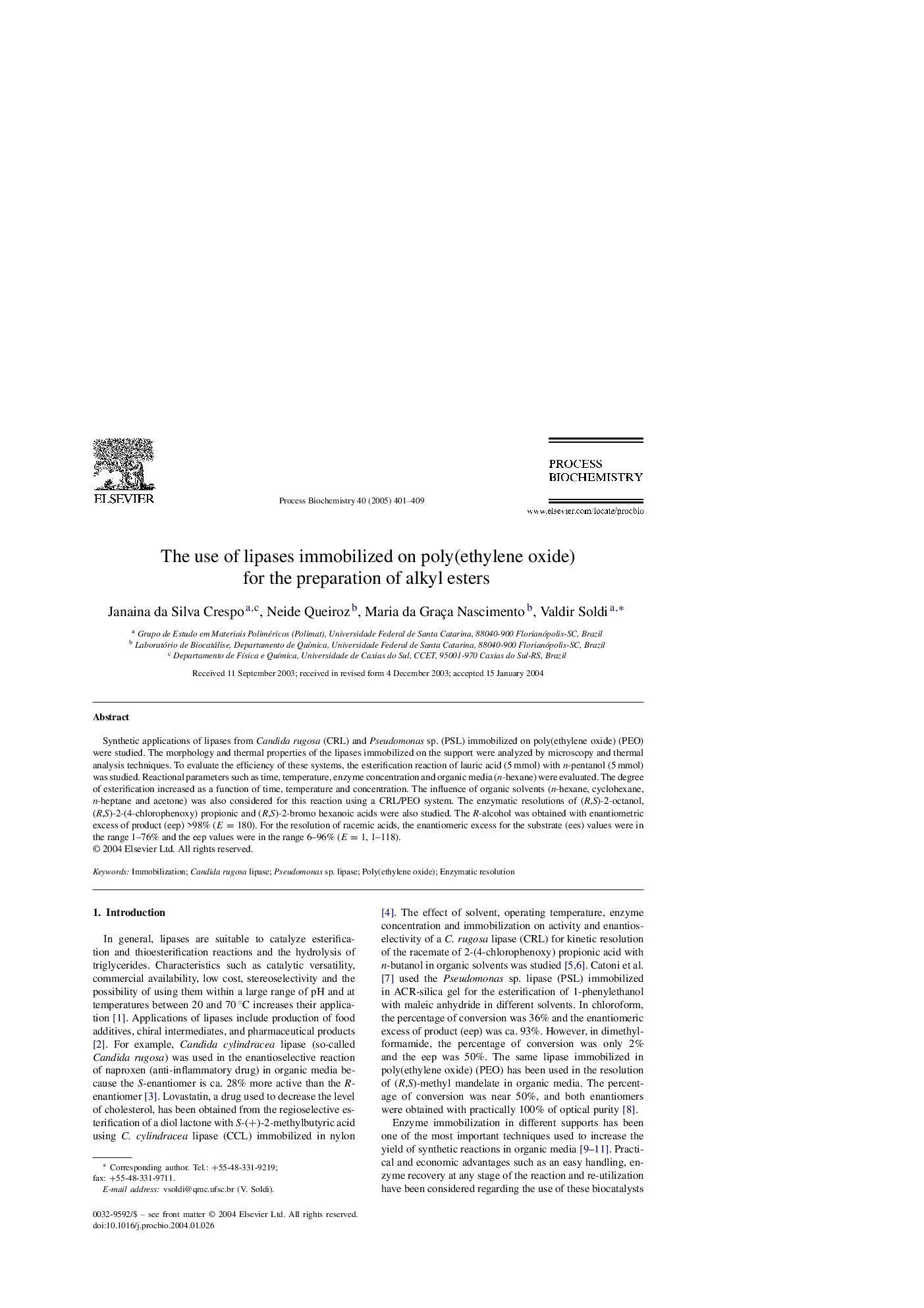| Article ID | Journal | Published Year | Pages | File Type |
|---|---|---|---|---|
| 10236215 | Process Biochemistry | 2005 | 9 Pages |
Abstract
Synthetic applications of lipases from Candida rugosa (CRL) and Pseudomonas sp. (PSL) immobilized on poly(ethylene oxide) (PEO) were studied. The morphology and thermal properties of the lipases immobilized on the support were analyzed by microscopy and thermal analysis techniques. To evaluate the efficiency of these systems, the esterification reaction of lauric acid (5Â mmol) with n-pentanol (5Â mmol) was studied. Reactional parameters such as time, temperature, enzyme concentration and organic media (n-hexane) were evaluated. The degree of esterification increased as a function of time, temperature and concentration. The influence of organic solvents (n-hexane, cyclohexane, n-heptane and acetone) was also considered for this reaction using a CRL/PEO system. The enzymatic resolutions of (R,S)-2-octanol, (R,S)-2-(4-chlorophenoxy) propionic and (R,S)-2-bromo hexanoic acids were also studied. The R-alcohol was obtained with enantiometric excess of product (eep) >98% (E=180). For the resolution of racemic acids, the enantiomeric excess for the substrate (ees) values were in the range 1-76% and the eep values were in the range 6-96% (E=1, 1-118).
Keywords
Related Topics
Physical Sciences and Engineering
Chemical Engineering
Bioengineering
Authors
Janaina da Silva Crespo, Neide Queiroz, Maria da Graça Nascimento, Valdir Soldi,
